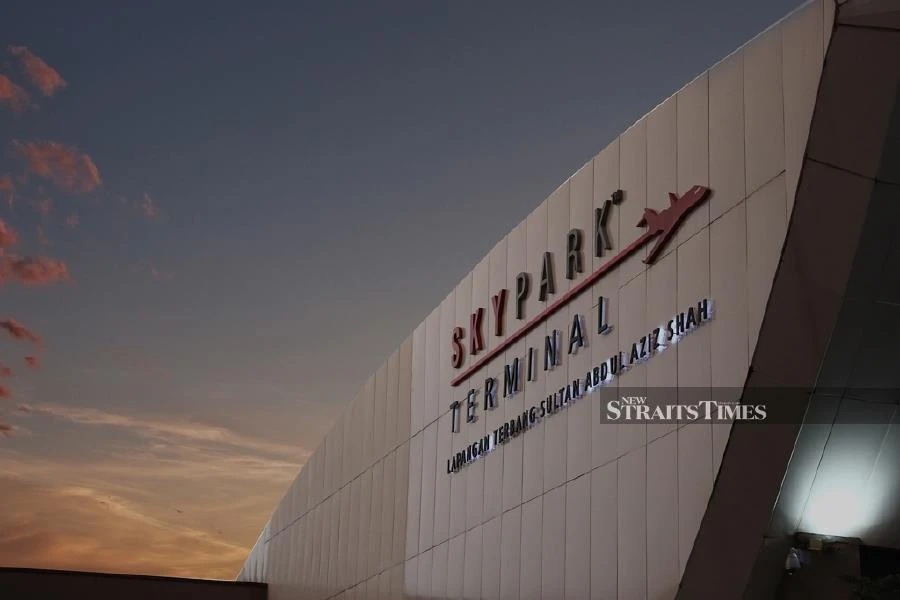25 June 2021
Carving out Sultan Abdul Aziz Shah Airport (Subang Airport) from Malaysia Airports Holdings Bhd’s (MAHB) network will adversely impact the cross-subsidisation model between profitable and non-profitable airports.
KLIA Aeropolis Sdn Bhd (KASB) head Randhill Singh said non-aeronautical revenue supplements MAHB’s cross-subsidisation of non-profitable airports along with the aeronautical cost throughout the airport operator’s network.
Subang Airport’s growth revenue is deemed ‘tremendous’ to MAHB and an important generator for the group’s non-aeronautical revenue, he said.
“Subang Airport is among the seven profitable airports that help us (MAHB) in cross-subsidising. This will further be enhanced by the Subang Airport Regeneration initiative that could potentially be multiplied by four times of Subang Airport’s annual revenue by 2030,” he said in a virtual press conference entitled ‘Rise of Subang Airport as Asia Pacific’s Preferred MRO Hub’, here today.
Randhill said MAHB’s finances would be reinforced, and cross-subsidisation will be enhanced via the implementation of the Subang Airport Regeneration plan.
MAHB expected the growth and development of its tenants in the five-year regeneration plan, with Subang Airport poised as the preferred one-stop aerospace and business aviation hub in the Asia Pacific.

The plan encompasses end-to-end services to support the operators with complete infrastructures, including developing leasable facilities, namely hangars, aircraft component repair workshops and aero-structure manufacturing facilities for third party operators.
MAHB had previously eyed a total investment of RM1.3 billion for the concept master plan of Subang Airport Regeneration.
The investment will be over five years and will be internally generated, bank borrowings, and partnership from industry players.
KLIA Aeropolis, a subsidiary of MAHB, has been tasked to undertake land development for MAHB’s network of airports nationwide.
Randhill said MAHB targeted between 60 per cent and 70 per cent contribution of non-aeronautical revenue from its profitable airports, which in turn reduce the pressure to increase airport tax.
“We can use our non-aeronautical revenue to cross-subsidise the aeronautical cost and non-profitable airports. We have 39 airports in our network, and only seven airports are profitable,” he said.
Randhill said aeronautical revenue, such as passenger service charge, aircraft parking and landing charges, are highly regulated and among the lowest in the world.
“The idea is to grow non-aeronautical and reduce reliance on aeronautical revenue. Hence, we need the government’s approval quickly for a clear decision, and any delay will jeopardise the industry further,” he cautioned.
Corporate Communications general manager Nik Anis Nik Zakaria said MAHB is hopeful the government to retain Subang Airport in its network.
“There is only handful airports that are profitable and Subang is one of them. We operate on cross-subsidisation model – where the profitable airports are cross-subsidising the non-profitable airports,” she said.
Nik Anis said there could be an implication to the entire MAHB’s network of airports it would affect the group’s ability to cross-subsidising and “maintaining” the other less profitable airport to sustain the connectivity and maintain an optimum operation.
“Eventually, it is going to impact our affordability and this, in turn, might go back to the government to maintain some of these airports. That is our concern on the implication.
“We think the government also understands it but we have to wait for the government’s decision,” she added.
Malaysia Aerospace Industry Association (MAIA) president Naguib Mohd Nor said a new entity with the concession agreement with Subang Airport must have a long-term vision and understanding of the industry.
“The organisation must be able to assimilate the government’s strategy over a long period and invest within the period. They must have the technical knowledge and industrial aptitude to facilitate such technological investment as aerospace is a long-term investment between 10 and 20 years,” he said.
Naguib said the new entity should also have the capability that matches the government’s strategy.
“There has been multiple takeover chatter in the past on Subang Airport. These spooks foreign operators.
The industry demands a clear and unwavering direction to progress the sector, and Subang Airport is key to this, he said, adding that the plans must be approved quickly.
“Any delay of implementation will impact operators timeline, investment strategy and hence decision to invest in Msia. Moreover, aerospace investors will look at Subang Airport as a high risk in their investment decision-making given it always exposed to such takeovers,” he added.
MAHB runs a network of 39 airports with several sizes and profiles nationwide. Of the total, only seven airports are profitable, and the remaining unprofitable airports, including short-takeoff and landings (STOL ports), hinging on MAHB’s cross-subsidising model.
MAHB’s network of airports includes five international airports, 16 domestic airports and 18 STOLs (interior of Sabah and Sarawak).
MAHB’s profitable international airports include Kuala Lumpur International Airport and its second terminal, klia2, Penang, Langkawi, Kuching and Kota Kinabalu, while the domestic airports include Subang (90 per cent-domestic) and Miri.
Source: www.nst.com.my
Site Search
Did you find what you are looking for? Try out the enhanced Google Search: